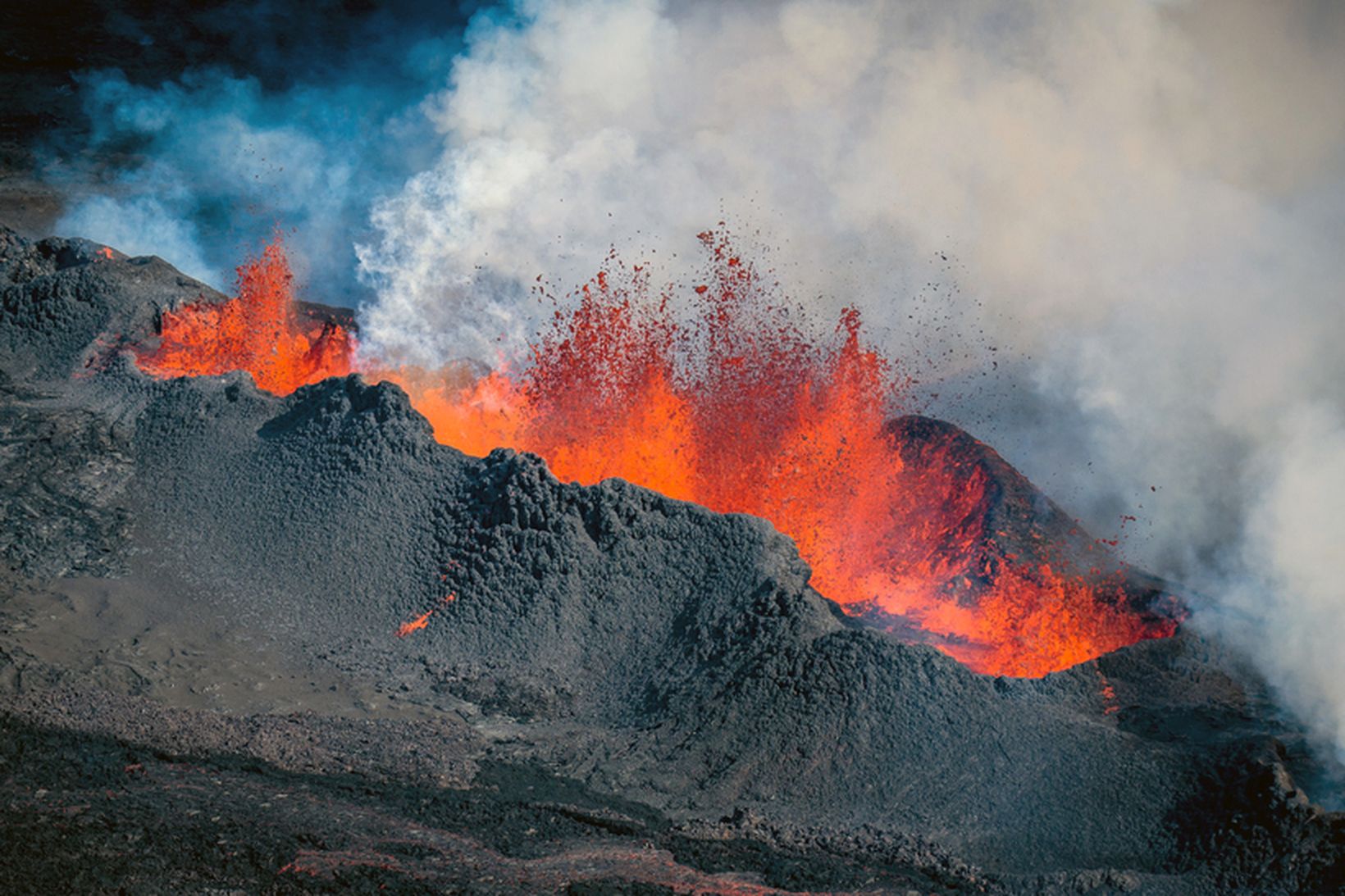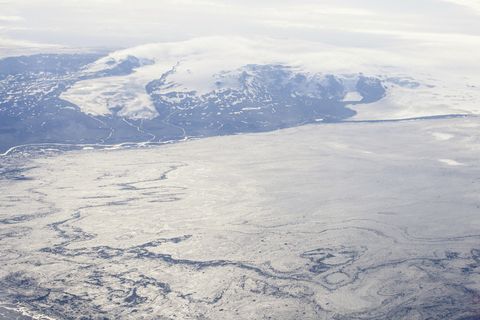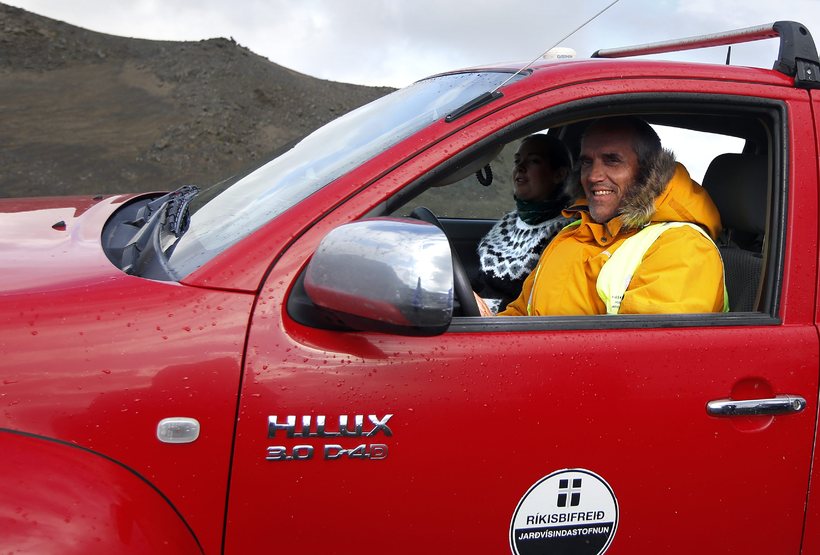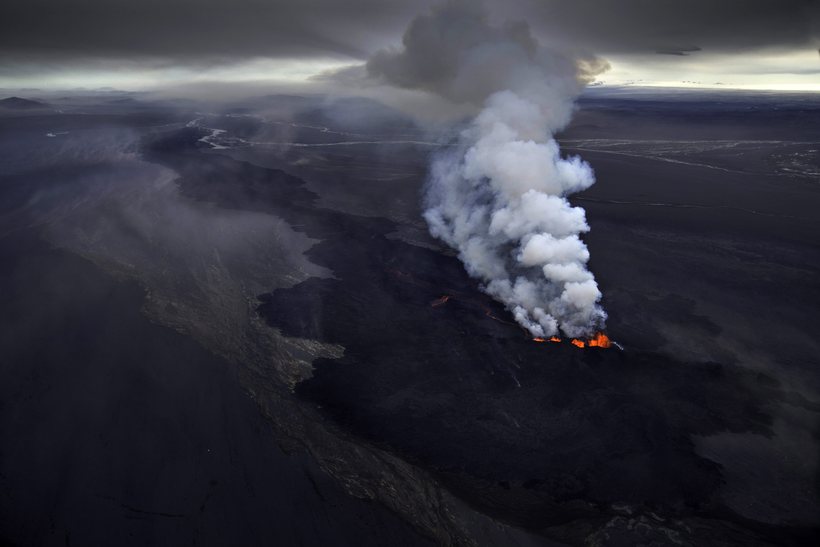An eruption in the sands a best case scenario
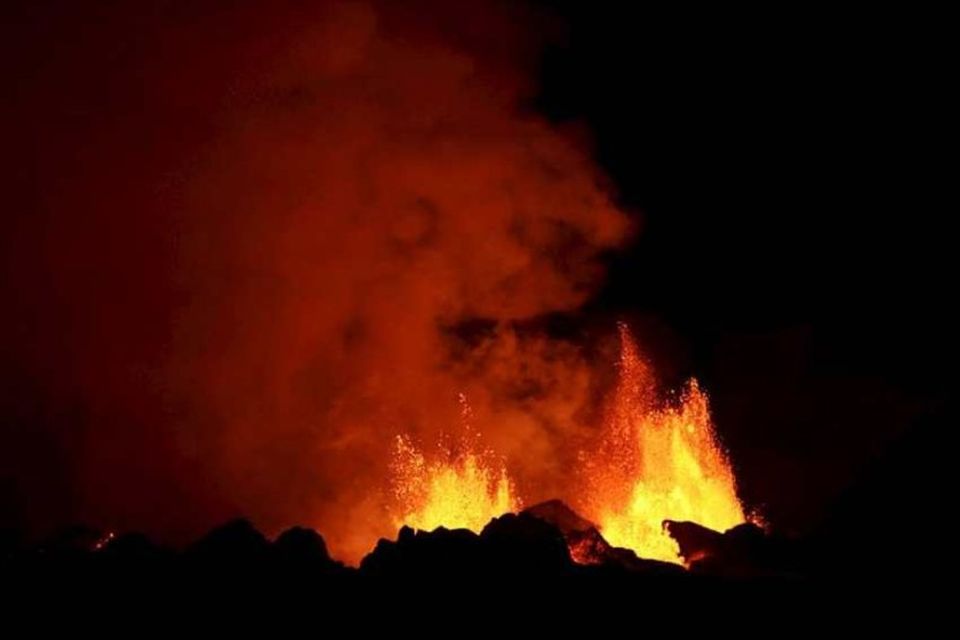
Mynd 1 af 35
Holuhraun - gosstöðvarnar aðfararnótt miðvikudagsins 10. september og snemma morguns.
Skapti Hallgrímsson
Mynd 2 af 35
Holuhraun - gosstöðvarnar aðfararnótt miðvikudagsins 10. september og snemma morguns.
Skapti Hallgrímsson
Mynd 3 af 35
Holuhraun - gosstöðvarnar aðfararnótt miðvikudagsins 10. september og snemma morguns.
Skapti Hallgrímsson
Mynd 4 af 35
Holuhraun - gosstöðvarnar aðfararnótt miðvikudagsins 10. september og snemma morguns.
Skapti Hallgrímsson
Mynd 5 af 35
Holuhraun - gosstöðvarnar aðfararnótt miðvikudagsins 10. september og snemma morguns.
Skapti Hallgrímsson
Mynd 6 af 35
Holuhraun - gosstöðvarnar aðfararnótt miðvikudagsins 10. september og snemma morguns.
Skapti Hallgrímsson
Mynd 7 af 35
Holuhraun - gosstöðvarnar aðfararnótt miðvikudagsins 10. september og snemma morguns.
Skapti Hallgrímsson
Mynd 8 af 35
Holuhraun - gosstöðvarnar aðfararnótt miðvikudagsins 10. september og snemma morguns.
Skapti Hallgrímsson
Mynd 9 af 35
Holuhraun - gosstöðvarnar aðfararnótt miðvikudagsins 10. september og snemma morguns.
Skapti Hallgrímsson
Mynd 10 af 35
Holuhraun - gosstöðvarnar aðfararnótt miðvikudagsins 10. september og snemma morguns.
Skapti Hallgrímsson
Mynd 11 af 35
Holuhraun - gosstöðvarnar aðfararnótt miðvikudagsins 10. september og snemma morguns.
Skapti Hallgrímsson
Mynd 12 af 35
Holuhraun - gosstöðvarnar aðfararnótt miðvikudagsins 10. september og snemma morguns.
Skapti Hallgrímsson
Mynd 13 af 35
Holuhraun - gosstöðvarnar aðfararnótt miðvikudagsins 10. september og snemma morguns.
Skapti Hallgrímsson
Mynd 14 af 35
Holuhraun - gosstöðvarnar aðfararnótt miðvikudagsins 10. september og snemma morguns.
Skapti Hallgrímsson
Mynd 15 af 35
Holuhraun - gosstöðvarnar aðfararnótt miðvikudagsins 10. september og snemma morguns.
Skapti Hallgrímsson
Mynd 16 af 35
Holuhraun - gosstöðvarnar aðfararnótt miðvikudagsins 10. september og snemma morguns.
Skapti Hallgrímsson
Mynd 17 af 35
Holuhraun - gosstöðvarnar aðfararnótt miðvikudagsins 10. september og snemma morguns.
Skapti Hallgrímsson
Mynd 18 af 35
Holuhraun - gosstöðvarnar aðfararnótt miðvikudagsins 10. september og snemma morguns.
Skapti Hallgrímsson
Mynd 19 af 35
Holuhraun - gosstöðvarnar aðfararnótt miðvikudagsins 10. september og snemma morguns.
Skapti Hallgrímsson
Mynd 20 af 35
Holuhraun - gosstöðvarnar aðfararnótt miðvikudagsins 10. september og snemma morguns.
Skapti Hallgrímsson
Mynd 21 af 35
Holuhraun - gosstöðvarnar aðfararnótt miðvikudagsins 10. september og snemma morguns.
Skapti Hallgrímsson
Mynd 22 af 35
Holuhraun - gosstöðvarnar aðfararnótt miðvikudagsins 10. september og snemma morguns.
Skapti Hallgrímsson
Mynd 23 af 35
Holuhraun - gosstöðvarnar aðfararnótt miðvikudagsins 10. september og snemma morguns.
Skapti Hallgrímsson
Mynd 24 af 35
Holuhraun - gosstöðvarnar aðfararnótt miðvikudagsins 10. september og snemma morguns.
Skapti Hallgrímsson
Mynd 25 af 35
Holuhraun - gosstöðvarnar aðfararnótt miðvikudagsins 10. september og snemma morguns.
Skapti Hallgrímsson
Mynd 26 af 35
Holuhraun - gosstöðvarnar aðfararnótt miðvikudagsins 10. september og snemma morguns.
Skapti Hallgrímsson
Mynd 27 af 35
Holuhraun - gosstöðvarnar aðfararnótt miðvikudagsins 10. september og snemma morguns.
Skapti Hallgrímsson
Mynd 28 af 35
Holuhraun - gosstöðvarnar aðfararnótt miðvikudagsins 10. september og snemma morguns.
Skapti Hallgrímsson
Mynd 29 af 35
Holuhraun - gosstöðvarnar aðfararnótt miðvikudagsins 10. september og snemma morguns.
Skapti Hallgrímsson
Mynd 30 af 35
Holuhraun - gosstöðvarnar aðfararnótt miðvikudagsins 10. september og snemma morguns.
Skapti Hallgrímsson
Mynd 31 af 35
Holuhraun - gosstöðvarnar aðfararnótt miðvikudagsins 10. september og snemma morguns.
Skapti Hallgrímsson
Mynd 32 af 35
Holuhraun - gosstöðvarnar aðfararnótt miðvikudagsins 10. september og snemma morguns.
Skapti Hallgrímsson
Mynd 33 af 35
Holuhraun - gosstöðvarnar aðfararnótt miðvikudagsins 10. september og snemma morguns.
Skapti Hallgrímsson
Mynd 34 af 35
Holuhraun seint í nótt - einn af strókunum í stórkostlegri náttbirtunni
Skapti Hallgrímsson
Mynd 35 af 35
Holuhraun seint í nótt - aðalstaðurinn
Skapti Hallgrímsson
The Holuhraun eruption last Friday.
mbl.is/Árni Sæberg
Volcanologist Ármann Höskuldsson says that the Holuhraun eruption is abating. That, however, does not mean that the seismic and volcanic activity in and around Bárðarbunga is over.
He hopes that when another crater or rift opens up, it will be in the sands, like the one in Holuhraun. An eruption in an area like the one that is going on in Holuhraun is far less hazardous than, say, a sub-glacial eruption.
That still does not mean the eruption in Holuhraun is not a danger to people. The rift spouts out poisonous gases, which have caused trouble in a town some 80 kilometers away from the rift.
No progression to the northeast
Ármann was in the Mývatnssveit area when an mbl.is reporter contacted him, but he will be at the site of the eruption today. Ármann has had to evacuate the area numerous times in the past few days because of high concentrations of poisonous gases.
According to Ármann, the lava field has stopped pushing northeast because of a reduction in the amount of lave coming from the rift.
"The eruption in the Holuhraun craters only has a few more days in it. After that, there will just be another eruption." Ármann compares the amount of magma in the dyke on the one hand, and magna coming from the rift on the other. The dyke is still full of magma, which is likely to want to break out at some point.
No way to tell where another eruption would start
He says there is no way to tell where a second eruption (or a third if you count the small rift that opened up briefly south of Holuhraun) would take place. An eruption in Bárðarbunga, predicted and feared because of its awesome power, is no certainty.
"A second eruption could take place on the plains near Holuhraun. Eruptions happen when magma is forced from the dyke," he says. "And the only way is up. When the pressure has again become too much, a second eruption will start. When that happens, we just have to hope that it will be in the area north of Dyngjujökull. There is plenty of space for lava to freely flow there."
Volcanologist Árnann Höskuldsson.
mbl.is/Eggert Jóhannesson
Jökulsá fighting off the lava.
mbl.is/RAX
- Planning for a safe route for visitors at the eruption site
- Seismic activity in Iceland a concern
- A nuclear-powered submarine can be seen from the window
- Icelandic Nature the biggest draw
- Was positive but is now "angry, frustrated and annoyed"
- "Now we'll be on the street"
- "It is understandable that patience is running low"
- 8 months pregnant and deadlifts 135 kilos
- Live footage from the eruption site
- Live footage: Magma running down from the overflowing crater
- Seismic activity in Iceland a concern
- A nuclear-powered submarine can be seen from the window
- "Now we'll be on the street"
- Planning for a safe route for visitors at the eruption site
- "It is understandable that patience is running low"
- Icelandic Nature the biggest draw
- Was positive but is now "angry, frustrated and annoyed"
- 8 months pregnant and deadlifts 135 kilos
- A burst of small earthquakes yesterday
- Seismic swarm in Askja this morning
- A burst of small earthquakes yesterday
- Seismic activity in Iceland a concern
- The magma chamber is not as deep as previously thought
- The wall of the crater has collapsed
- "Now we'll be on the street"
- A month since the eruption began
- The first real estate purchase agreements for Grindavík went through yesterday
- Opened the road to Grindavík for residents and first responders
- Earthquake felt in the capital area with many aftershocks
- A nuclear-powered submarine can be seen from the window
Iceland Monitor — Fleiri fréttir
Í gær
Fimmtudaginn 18. apríl
Miðvikudaginn 17. apríl
Þriðjudaginn 16. apríl
Mánudaginn 15. apríl
Laugardaginn 13. apríl
Föstudaginn 12. apríl
Fimmtudaginn 11. apríl
Miðvikudaginn 10. apríl
Þriðjudaginn 9. apríl
Mánudaginn 8. apríl
Sunnudaginn 7. apríl
Laugardaginn 6. apríl
Föstudaginn 5. apríl
Fimmtudaginn 4. apríl
Miðvikudaginn 3. apríl
Þriðjudaginn 2. apríl
Mánudaginn 1. apríl
Laugardaginn 30. mars
Föstudaginn 29. mars
Fimmtudaginn 28. mars
Miðvikudaginn 27. mars
- Planning for a safe route for visitors at the eruption site
- Seismic activity in Iceland a concern
- A nuclear-powered submarine can be seen from the window
- Icelandic Nature the biggest draw
- Was positive but is now "angry, frustrated and annoyed"
- "Now we'll be on the street"
- "It is understandable that patience is running low"
- 8 months pregnant and deadlifts 135 kilos
- Live footage from the eruption site
- Live footage: Magma running down from the overflowing crater
- Seismic activity in Iceland a concern
- A nuclear-powered submarine can be seen from the window
- "Now we'll be on the street"
- Planning for a safe route for visitors at the eruption site
- "It is understandable that patience is running low"
- Icelandic Nature the biggest draw
- Was positive but is now "angry, frustrated and annoyed"
- 8 months pregnant and deadlifts 135 kilos
- A burst of small earthquakes yesterday
- Seismic swarm in Askja this morning
- A burst of small earthquakes yesterday
- Seismic activity in Iceland a concern
- The magma chamber is not as deep as previously thought
- The wall of the crater has collapsed
- "Now we'll be on the street"
- A month since the eruption began
- The first real estate purchase agreements for Grindavík went through yesterday
- Opened the road to Grindavík for residents and first responders
- Earthquake felt in the capital area with many aftershocks
- A nuclear-powered submarine can be seen from the window





































